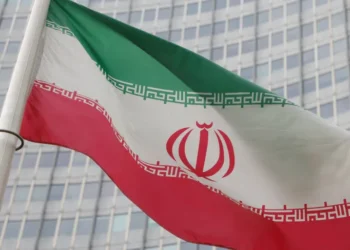Dr. Ernest Addison has assured Ghanaians that the country is well-position to achieve financial inclusion in the medium-term. He stated that his outfit has implemented several policy measures geared towards banking the ‘unbanked’ and formalizing the informal financial sector. This, he said, constitutes an integral part of the overall strategy to promote an inclusive financial system in the country.
In his opening remarks at the AFI Virtual Working Group Meeting, the Governor of the Bank of Ghana indicated that the Bank is currently focusing on the financially excluded group. This he noted, is in line with Ghana’s commitment to increase access to formal financial services. He further stated that the target is to increase financial inclusion from 58% in 2017 to 85% of the adult population by 2023. Dr. Addison explained that the increase in access to financial services will create economic opportunities and contribute to poverty reduction.
“With high penetration of mobile money and increased digital payments, Ghana is well-positioned to become a financially included society in the medium-term”.
Dr. Addison
The National Financial Inclusion Development Strategy
Meanwhile, Dr. Addison acknowledged that the country’s National Financial Inclusion Development Strategy (NFIDS) framework is providing the road-map to attaining this goal. He highlighted the strategic pillars outlined in the NFIDS to support this agenda in the country. These include financial stability, financial infrastructure, financial consumer protection, and financial literacy and capacity. Another strategic pillar is to promote access, quality, and usage of financial services in Ghana.
Furthermore, he pointed out that the NFIDS is supporting the Bank’s agenda of increasing the availability of affordable and quality financial services to the populace. The bank aims to develop a banking system with sound, responsible, and innovative financial institutions.
Promoting financial digitization
Also, he stated that the concept of financial digitization has proven to be a key pillar for financial inclusiveness, especially under this pandemic era. As a result, he noted that the Bank of Ghana launched a Digital Financial Services (DFS) Policy to complement the NFIDS. He indicated that the DFS policy provides a strong regulatory framework for all stakeholders to support innovation, competition, and financial inclusion. The policy also seeks to enhance the use of digital infrastructure, and consequently support the emergence and growth of Fintechs.
Moreover, the Governor indicated that the increasing numbers of Fintechs in the country’s ecosystem have further boosted the delivery of value-added financial services. He noted that the Bank of Ghana has wholly embraced the Fintech agenda. Therefore, it has set up Fintech and Innovation Office to drive the process of innovation towards financial inclusiveness.
Meanwhile, Dr.Addison hinted that the Bank has recently issued a framework for Digital Sandboxes. These will serve as testbeds and platforms to minimize time to market rate of innovative solutions. He educated that the Regulatory Sandbox serves as a platform for testing innovative technology solutions. This will take place in a live environment within defined parameters and timelines. He added that sandboxes provide enabling environment for the development of digital talent and knowledge for scaling up Fintechs.
Developments on women financial inclusion
Touching on ways of promoting women’s financial inclusion, Dr. Addison indicated the Bank has spearheaded the process through various initiatives including the setting up of a gender-disaggregated data portal. According to him, the Bank also introduced the financial sector-wide Online Regulatory Analytics and Surveillance System. This would enhance the compilation of gender-disaggregated financial data for policy formulation and decision making.
Furthermore, he indicated that the policies have yielded some encouraging results. Citing the increased registered mobile money accounts to over 38 million in 2020 as an example.
“Volume of Instant Pay also increased four folds in 2020”.
READ ALSO: Average lending rate up marginally in February 2021


















